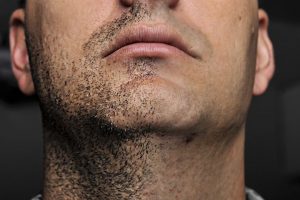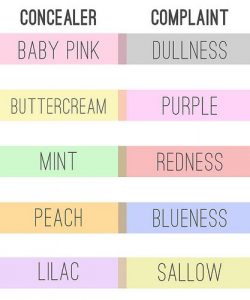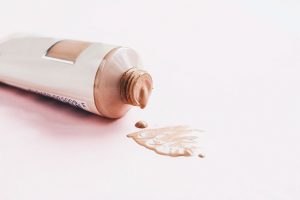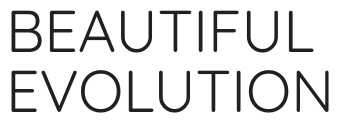Ultimate Guide to Concealing and Covering a Beard Shadow

This tutorial on how to cover a 5 O’clock shadow was created for every crossdresser out there who want to look and feel more feminine and anyone else who is interested in hiding the shadow left behind from shaving. There are many different tutorials for this that teach very heavy drag-based techniques techniques with a ‘one size fits all’ approach to color correcting. In this particular guide, we break down the right color correctors and products to use for every skin tone as well as how to apply them in a way that gives you a natural, undetectable result.
- Color Correcting Concealer
- Liquid foundation
- Face powder
- Optional – Powder foundation
What causes a 5 o’clock shadow and how do I cover my beard shadow?
Some might wonder how do you get a 5 o‘clock shadow? It is just the hair that appears on the face towards the end of the day after a man has shaved early in the morning. The #1 secret to concealing a beard shadow is to use a color corrector. By neutralizing the bluish tint of the beard shadow, you can achieve a natural look with less makeup. Choose your color corrector based on your skin tone.
Hide that Beard Shadow with Color Correcting Concealer
QUICK BEARD CONCEALER TIP: You will need to apply an orange color concealer for medium skin tones, a pink color concealer for lighter skin tone, and a red color concealer for darker skin tones to cover your beard shadow area.
Only use the colors you really need! If you have trouble seeing a spot on your face when it is covered in regular foundation then chances are you won’t need to neutralize it with color.
Check out our picks for the Best Color Correcting Concealers. Click the button below to find out our ratings!
Application Instructions for using Color Correcting Concealer on a Beard Shadow
- Apply the color correctors before any foundation – color concealer is the first thing to use but can be applied on top of an initial face primer.
- Apply a light layer of concealer only in beard shadow areas – only apply the concealer in the general area that you need to color correct and only apply a light layer
- Optional – Layer it with setting powder – you can layer it by using setting powder between each layer of concealer application for better coverage
- Blend out the concealer – Avoid leaving any harsh edges because it is more likely to show through foundation. Use a beauty blender makeup sponge because it is easier to blend with.
- Move on to applying foundation directly on top of the color correcting concealer – Lightly pat the foundation on these areas to avoid any wiping off or smudging of the color corrected areas. Use a good quality stippling brush or a beauty blender for the foundation application
THE LIPSTICK HACK: Using lipstick instead of concealer for hiding facial hair is not recommended because lipstick smudges and blurs. Use color correcting concealer because it is designed to conceal and correct color!
Color correcting concealer can also help with other complaints you might have as seen below.

Color Correcting Concealer Chart
Apply Liquid Foundation for a Flawless Base
Conceal that beard shadow with some liquid foundation. How you apply foundation will depend on whether you have oily skin or dry skin. There are four tools to consider, including your fingers, a beauty blender, a kabuki brush, and a flat brush. Each of them work with different skin types and offer certain levels of coverage. Make sure you applied an ample amount of color correcting concealer to your beard shadow and conceal any discoloration on the face.

Apply liquid foundation for a smooth base
Application Instructions for using your finger to apply foundation
If you want light to medium coverage, use your fingers.
- Make sure to wash your hands thoroughly to get rid of any bacteria and dirt before you start.
- When using your hands, pour a dime-size amount of foundation onto the back of your hand.
- Next, evenly apply the product all over your face.
- The best technique for using your hand is a pat and roll motion, using at least two fingers. This is a good way to make sure that the foundation doesn’t just sit on top.
Application Instructions for using a beauty blender to apply foundation
If you’re hoping to achieve medium to full coverage, the beauty blender is a good tool to use, especially if you have scarring or acne.
- Make sure to wash your hands thoroughly to get rid of any bacteria and dirt before you start.
- Dampen the sponge and squeeze out any excess water.
- Pour a dime-size amount of foundation onto the back of your hand.
- Using your fingers, dot your foundation all over your face.
- Use the beauty blender to blend out the dots, so you have an even coverage.
Application Instructions for using a kabuki brush to apply foundation
The Kabuki brush works best on normal to oily skin types. This brush gives great coverage while also buffing out the foundation.
- Make sure to wash your hands thoroughly to get rid of any bacteria and dirt before you start.
- Pour a dime-size amount of foundation onto the back of your hand.
- Use your fingers to apply the liquid foundation all over your face.
- Then, use the kabuki brush in upward, outward, and circular motions.
Application Instructions for using a flat brush to apply foundation
The flat foundation brush is best for dry skin types! Plus, it makes it easy to work in light layers.
- Make sure to wash your hands thoroughly to get rid of any bacteria and dirt before you start.
- Pour a dime-size amount of foundation onto the back of your hand.
- Use your fingers to apply the liquid foundation all over your face.
- With this tool, use downward strokes to get the smoothest application possible.
Look Feminine and Dewy with Loose Powder
You apply loose face powder after foundation to set the makeup on your skin and make it last longer. It’s finer than pressed powder, so it tends to settle into fine lines and wrinkles more easily than pressed powder does. Loose Powder is finer and it contains less oil than pressed powder, so it’s definitely the best choice for oily skin. For a sheer look, you apply it with a big, fluffy Kabuki brush; for more coverage, wrap a powder puff around your finger and press it into your skin.

Use loose powder for dewy skin
Proper Application Is Key To A Feminine, Dewy Look
Application Instructions for Loose Powder
Apply powder after you applied the color correcting concealer and liquid foundation. Powder works to set the makeup.
- To apply, dip a large powder brush in the powder and pat it on the side of the container to remove any excess. You can also blow on the brush.
- Dab on a generous amount of powder on the beard area. Don’t use stroking motions or you’ll streak your foundation.
- Let dry and once everything has dried, brush off the excess powder with soft strokes.
LOOSE POWDER PROTIP – Apply to other areas that are typically oily throughout the day
Be Careful With Over-Application of powder. You may be tempted to bring your powder along with you to refresh your makeup throughout the day, but be careful not to overload on face powder. Bring along blotting papers that are meant to soak up oils without messing up your makeup. If you overdo your powder, your makeup will start looking cakey.
Optional – Powder foundation
If you are finding that you need a little extra coverage to cover chin hair or hide stubble, powder foundation is the solution. This is a great option for areas that need extra coverage.
Application Instructions for Powder Foundation
- Using a makeup sponge, press on one or two light layers of powder foundation over any remaining visible imperfections
Practice makes perfect! Master these techniques to achieve a natural and feminine!
